
On 4 Jun 1906, pathologist Howard T. Ricketts discovered that Rocky Mountain Spotted Fever is caused by an unusual microbe spread by ticks. Its symptoms are similar to typhus except the rash starts at extremities and moves to the trunk. The disease causes high morbidity with about 70% of cases requiring hospitalization, without which, the untreated mortality rate is about 7% of cases.
He published a paper, Rocky Mountain Spotted Fever which summarized his investigations into the nature and means and transmission of the disease. It is well worth finding out about his careful work by reading this report, given in his own words.

On 4 Jun 1962, Charles William Beebe died, an American biologist whose lust for exploration took him to remarkable depths in the ocean, through the mountains and jungles of the Far East, and on studies of the complex ecology of the tropics. Today's book pick is: The Remarkable Life of William Beebe: Explorer and Naturalist, by Carol Grant Gould, who makes Beebe's biography read like a riveting adventure. Not surprising since his insatiable curiosity for natural world took him on such trips from the Galapagos Islands, to the jungles of British Guiana, from the comfort of the Bronx Zoo to the breath-taking danger of the previously unfathomed depths of the ocean in a four-foot diameter bathysphere of his own invention. This vibrant biography of a great naturalist gives him the recognition he deserves for his trailblazing work in environmental science.
It is available from Amazon, typically about New from $96.05. Used from $44.99. (As of earlier time of writing - subject to change.)
 | We are at the dawn of a new era, the era of “molecular biology” as I like to call it, and there is an urgency about the need for more intensive application of physics and chemistry, and specially of structure analysis, that is still not sufficiently appreciated. |
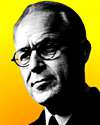 | Gifford Pinchot points out that in colonial and pioneer days the forest was a foe and an obstacle to the settler. It had to be cleared away... But [now] as a nation we have not yet come to have a proper respect for the forest and to regard it as an indispensable part of our resources—one which is easily destroyed but difficult to replace; one which confers great benefits while it endures, but whose disappearance is accompanied by a train of evil consequences not readily foreseen and positively irreparable. |
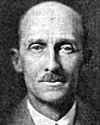 | The beauty and genius of a work of art may be reconceived, though its first material expression be destroyed; a vanished harmony may yet again inspire the composer, but when the last individual of a race of living things breathes no more, another heaven and another earth must pass before such a one can be again. |
| Before you look at today's web page, see if you can answer some of these questions about the events that happened on this day. Some of the names are very familiar. Others will likely stump you. Tickle your curiosity with these questions, then check your answers on today's web page. | |
| Births | |
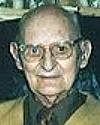 | On 4 Jun 1910, the inventor of the hovercraft was born. He began by testing the concept using kitchen scales, tin cans and a vacuum cleaner. The next year he built a working balsa wood model with a model-aircraft engine. The first full-scale prototype, SR-N1, weighed 7 tons and was capable of 60 knots. It crossed the English Channel in 1959 (with the inventor aboard). Hovercraft entered regular cross-channel service in 1968. Can you name this man? |
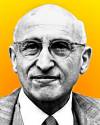 | Beno Gutenberg was born 4 Jun 1889, an American seismologist noted for his analyses of earthquake waves and the information they furnish about the physical properties of the Earth’s interior. When he worked with Charles Richter, they developed a method of determining the intensity of earthquakes. Calculating the energy released by present-day shallow earthquakes, they showed that three-quarters of that energy occurs in a particular geographical region. Where is this geographic region? |
| Deaths | |
 | William Beebe (1877-1962) was an American biologist, explorer, and writer on natural history. As director of tropical research for the New York Zoological Society from 1919, he led scientific expeditions to many parts of the world. He was the co-inventor of the bathysphere, a spherical diving-vessel for use in underwater observations. In 1934, with Otis Barton, he descended in his bathysphere to a then record depth. To the nearest thousand feet, how deep was this record dive? |
| Events | |
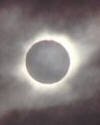 | On 4 Jun of a certain year, the first total solar eclipse reliably recorded was noted by the Chinese. To the nearest century, when was this earliest record made? |
 | On 4 Jun 1984, the cloning of DNA sequences from an extinct animal was reported. Using samples from an over 140-yr-old hide in a German museum, three Berkeley scientists managed to extract enough DNA from the animal’s flesh to determine some of its sequences of “base pairs” Despite degradation fragmenting the DNA molecule, the scientists could show this animal was more closely related to the zebra than the horse. Can you name this extinct animal? |
 | In 1963, a U.S. patent for a “Toy Truck” (No. 3,091,888) was issued. The toy separated into a chassis, driver's cab, truck body, wheels and four axles so it could be reassembled in either as a closed van body or a dump truck form. The inventor was not yet an adult To within a couple of years, what was the age of the inventor? |
Fast answers for the previous newsletter for June 3: authority on the preservation of human blood for transfusion, and organizer of blood-plasma programs • Henry Shrapnel • -the preserving of food in hermetically sealed containers • the true nature of the circulation of the blood and of the function of the heart as a pump • 20 minutes • the decade including the year 1880 • Hale Telescope.
 If you enjoy this newsletter, the website, or wish to offer encouragement or ideas, please send feedback by using your mail reader Reply button.
If you enjoy this newsletter, the website, or wish to offer encouragement or ideas, please send feedback by using your mail reader Reply button. Your click on a Facebook, StumbleUpon, or other social button on the site webpages is also a welcome sign of appreciation. Thank you for using them.
© This newsletter is copyright 2020 by todayinsci.com. Please respect the Webmaster's wishes and do not put copies online of the Newsletter — or any Today in Science History webpage. (If you already have done so, please remove them. Thank you.) Offline use in education is encouraged such as a printout on a bulletin board, or projected for classroom viewing. Online, descriptive links to our pages are welcomed, as these will provide a reader with the most recent revisions, additions and/or corrections of a webpage. For any other copyright questions, please contact the Webmaster by using your mail reader Reply button.
--
If you do not want to receive any more newsletters, Unsubscribe
To update your preferences and to unsubscribe visit this link
Executive Real Estate Business Class
-
"It was like a man with wings. It wasn't like anything you'd see on TV or in a monster movie." ...
About the publisher
Search This Blog
Blog Archive
-
▼
2021
(585)
-
▼
June
(64)
- On This Day for June 30 - Night of the Long Knives...
- Newsletter for Wednesday 30 June.
- On This Day for June 29 - London's Globe Theatre d...
- Newsletter for Tuesday 29 June.
- On This Day for June 28 - Assassination of Archduk...
- Newsletter for Monday 28 June.
- On This Day for June 27 - Yen made official moneta...
- Newsletter for Sunday 27 June.
- On This Day for June 26 - Opening of CN Tower, Bab...
- Newsletter for Saturday 26 June.
- On This Day for June 25 - Korean War begun, Antoni...
- Newsletter for Friday 25 June.
- On This Day for June 24 - Russia invaded by Napole...
- Newsletter for Thursday 24 June.
- On This Day for June 23 - Battle of Bannockburn, C...
- Newsletter for Wednesday 23 June.
- On This Day for June 22 - Mutiny against Henry Hud...
- Newsletter for Tuesday 22 June.
- On This Day for June 21 - Japanese forces defeated...
- Newsletter for Monday 21 June.
- On This Day for June 20 - Casket Letters found, Ho...
- Newsletter for Sunday 20 June.
- Tonight at 8/7c: Watch ‘Fight the Power’
- On This Day for June 19 - Rosenbergs executed for ...
- Newsletter for Saturday 19 June.
- On This Day for June 18 - War of 1812 begun, Sir P...
- Newsletter for Friday 18 June.
- On This Day for June 17 - Arrest of O.J. Simpson, ...
- Newsletter for Thursday 17 June.
- On This Day for June 16 - First woman in space, Jo...
- Newsletter for Wednesday 16 June.
- On This Day for June 15 - Magna Carta sealed by Ki...
- Newsletter for Tuesday 15 June.
- On This Day for June 14 - First prisoners at Ausch...
- Newsletter for Monday 14 June.
- On This Day for June 13 - Historic meeting between...
- Newsletter for Sunday 13 June.
- On This Day for June 12 - Election of Boris Yeltsi...
- Newsletter for Saturday 12 June.
- Listen Now! Blindspot: Tulsa Burning Podcast
- On This Day for June 11 - Oklahoma City bomber exe...
- Newsletter for Friday 11 June.
- On This Day for June 10 - First “witch” hanged in ...
- Newsletter for Thursday 10 June.
- On This Day for June 9 - Landslide reelection vict...
- Newsletter for Wednesday 9 June.
- On This Day for June 8 - Michelangelo's David inst...
- Newsletter for Tuesday 8 June.
- Action required: Update your HistoryExtra password
- On This Day for June 7 - Lateran Treaty ratified, ...
- Newsletter for Monday 7 June.
- On This Day for June 6 - Normandy Invasion begun, ...
- Newsletter for Sunday 6 June.
- On This Day for June 5 - Start of the Six-Day War,...
- Newsletter for Saturday 5 June.
- On This Day for June 4 - Dunkirk evacuation ended,...
- Newsletter for Friday 4 June.
- Tonight: ‘Alone’ Returns at 9:30/8:30c
- On This Day for June 3 - Pro-democracy protest in ...
- Newsletter for Thursday 3 June.
- On This Day for June 2 - Elizabeth II crowned quee...
- Newsletter for Wednesday 2 June.
- On This Day for June 1 - Debut of CNN, Morgan Free...
- Newsletter for Tuesday 1 June.
-
▼
June
(64)
-
Blogroll
-
About
HistoryFact










0 comments:
Post a Comment